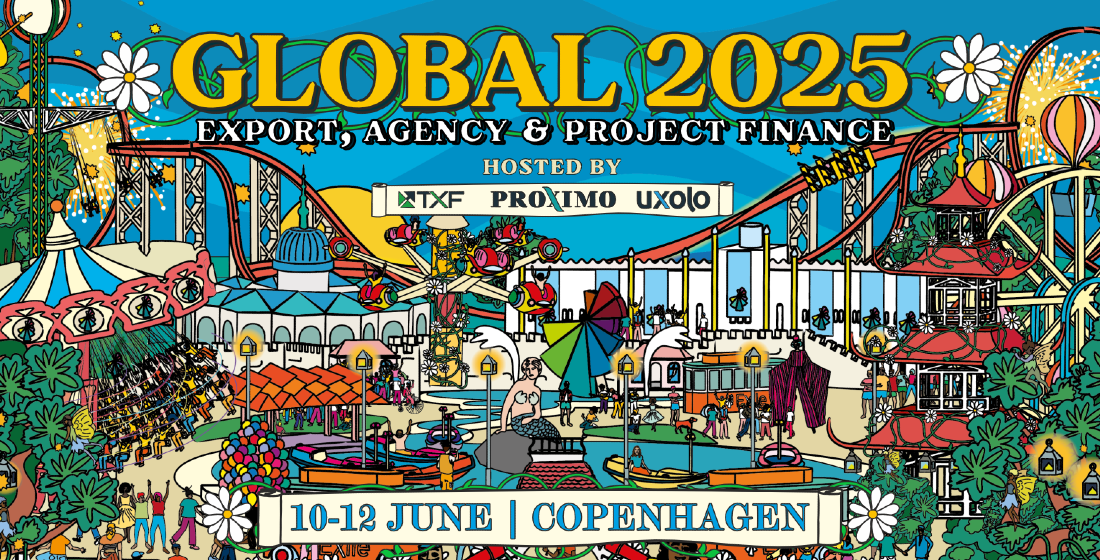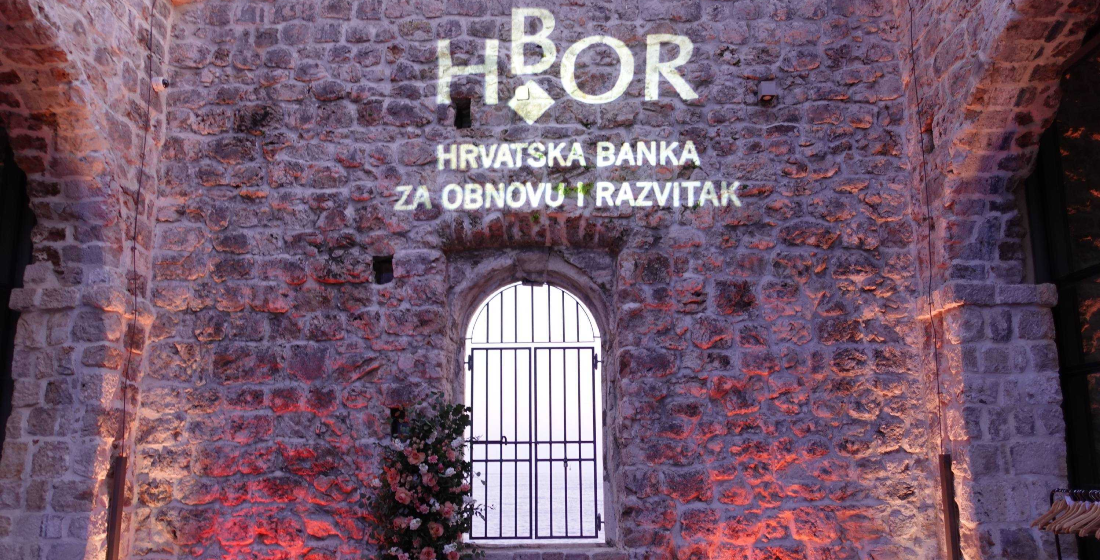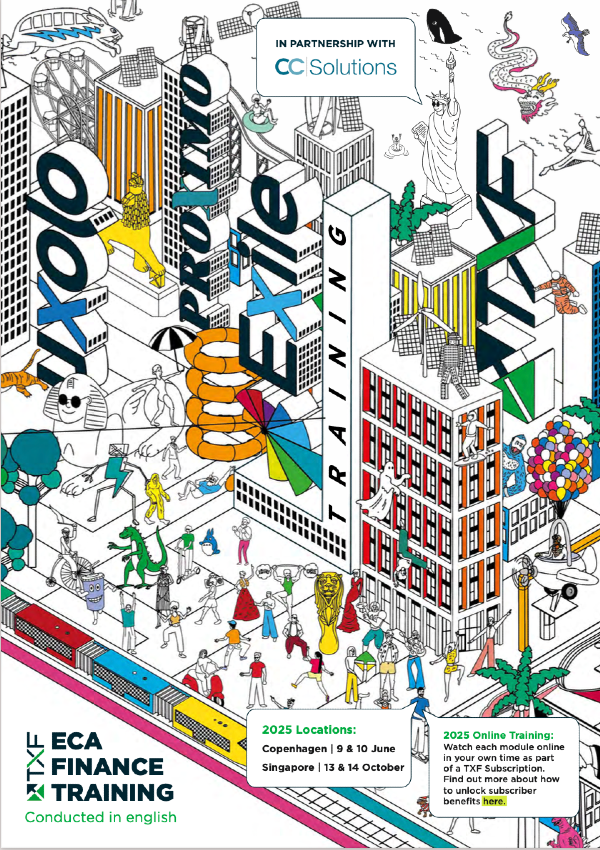Key trends revealed in TXF’s H1 2019 export finance report
The TXF half-year 2019 export finance report shows a bullish start to the year in the power sector, Japan’s JBIC coming in as top direct lender and the US and Australia being the two top destination markets. Jonathan Bell provides some teasers.

Monitoring the export finance market is something that needs constant attention, and the TXF Export Finance Report - generated through TXF Media's tagmydeals.com - is the only ECA-backed deals database in the market.
Any outsider could be forgiven thinking that the ECA-backed market is sluggish and opaque with a dearth of deals in the financing pipeline. Sometimes it is not until towards year-end that the full picture begins to unravel, but through the data provided by TXF at half-year, and our full-year reports, a more comprehensive outlook can be much better assessed.
Over six years ago we approached all the major commercial banks in the market, and to be honest it was, with some, a hard slog to get them to submit data. But we persevered – visiting every player we could. I won’t bore you with the detail, but today TXF has around 45 major international commercial banks, ECAs and MFI/DFI guarantors submitting comprehensive data.
This valuable source allows everybody to access data and glean invaluable insight into how the market is working. And some of the key takeaways from the latest half-year 26-page report show that the export finance power sector has performed much better than the corresponding period last year, that JBIC is topping the league as the biggest direct lender and that the USA and Australia (the latter due to one big deal) have been the biggest – volume-wise – ECA destinations.
Overall though, global volume was down on last year’s first half. TXF Data recorded 102 ECA supported deals (a drop of 44 on H1 2018) covering $41.8 billion of financing (a decrease of $7.9 billion on H1 2018). This represents a decrease of around 16%. ECA/DFI coverage of that total debt amounted to 86.7% – a little higher than the average for H1 2018, and likely to stay at those levels for the future unless commercial banks can fathom other Basel-friendly ways (synthetic securitisations for example) to offset risk.
Looking at the major drivers and brakes on growth for the half-year, the conventional power sector showed particularly bullish trends.
ECA-backed conventional power volume in H1 2019 is $16.8 billion, a little more than the whole of 2018. The sector tops all others for ECA-supported volume in the past six months and outstrips renewables by a little over 100%. That said, in 2018 for the full year, renewables ECA support was considerably higher than that for conventional power, in part reflective of financial close on some very large European offshore wind transactions but also an increase in both medium- and large-ticket transactions in emerging markets. With a number of similar deals in the pipeline this year, that performance could yet be repeated by year-end.
Interestingly, one of the major ECA-backed deals in conventional power to be financed so far this year – the $2 billion JBIC-backed financing for the Van Phong 1 coal-fired project in Vietnam – used supercritical technology, for which, legacy deal or not, there is no real excuse given readily available ultra-super critical technology.
And the oil & gas sector revealed some interesting aspects also. The roller coaster cycle in the ECA-backed oil & gas market appears to be in coasting mode, with just six deals and $4.3 billion of volume in H1 2019. Unlike 2018, when disappointing volume in H1 was not dissimilar to this year, the pipeline of major 2018 deals like Duqm, Bapco, Corpus Christi 3 and Midor – most of which closed in H2 2018 – is not looking so certain this year for the second half.
But there are some positives. With potential financial close on RAPID in Malaysia, and $30 billion of planed debt to be raised for two LNG projects in Mozambique, H2 2019 could yet see oil and gas volumes jump, but only if ECAs and banks get a move on.
That said the long-term prospects for the sector are looking increasingly difficult in terms of final investment decisions. Brent recently dropped below $60 a barrel again, and a new report from BNP Paribas claims the oil industry faces existential decline from the combination of renewable energy and electric vehicles.
Within shipping, ECA-backed debt to the cruise ship sector in H1 2019 is double the $2.5 billion volume closed in H1 2018. But non-cruise shipping volume is back to a trickle – just over $1 billion – after a strong 2018 when volume jumped to $9 billion and almost matched the cruise sector. And deal flow is unlikely to improve – new shipbuilding orders in the first six months of 2019 dropped 42% year-on-year largely because of the US-China trade dispute. ECA-backed scrubber installation deals or new vessel purchases related to IMO 2020 compliance are unlikely to make a significant impact on this sector’s volume figures either.
With telecoms penetration in emerging markets continuing to grow and the global equipment market expected to almost double to $562 billion by 2023, the ECA-backed volume figure is likely to rise over the next few years. But as China’s Sinosure does not release detailed deal figures, a full picture of ECA-backed deals remains opaque.
On the aircraft financing front, at around $250 million of ECA-backed aircraft volume reported for H1 2019 for just three deals, the 2019 end of year figure has the potential to be even less than last year – although the majority of Airbus deliveries are always skewed towards the second half of the year because of its lumpy production process. Put very simply, and short of any global financial meltdown, unless the cost-of-debt benefits of ECA support significantly outweigh the alternatives, ECA-backed aircraft financing is going to become an increasingly marginalised product – good for governments, not so good for ECA departments at banks.
Beyond specific industrial sectors, the report also revealed that the volume share of ECA-backed debt for deals of $550 million-plus continues to climb in H1 2019 with $550 million-plus transactions taking 79.5% of the market volume. Despite ECA attempts to better address the needs of SMEs, the reality is that only 4.7% of ECA supported loans went to deals in the $1-100 million volume range in H1 2019. Perhaps it’s time to recognise that ECAs simply don’t have the staffing or IT for churning out vast numbers of small-ticket SME transactions.
And, as far as lenders are concerned, it was French lenders which blitzed the full-year 2018 ranking, providing $20.1 billion to ECA-backed deals globally. That French domination continues in H1 2019, with French lenders providing $6.1 billion of ECA and DFI-backed volume – around twice that of second-placed Japan. However, there is a caveat – because of the opaqueness of concessional loans provided by Chinese state-owned banks for the BRI programme they are not included in the ranking.
The overall report contains numerous charts and diagrams expanding on much of the above as well as looking at a number of other aspects including: the use of proceeds; regions; volume by nationality of funds; borrowing by country; the use of currencies; top sector and tranche analysis. We even analyse pricing and tenors – take a proper look.
The full new export finance report covering the latest export finance trends for H1 2019, with all the related charts, is available for subscribers only. If you do not subscribe to us yet and you want to find out more please contact my colleague Vanisha at TXF: vanisha.meisuria@txfmedia.com
Now time to get up to speed on the markets.
Here's our exclusive TXF Essentials subscriber content
TXF Global 2019: ANZ on growing Asia-Pacific exposures
TXF spoke with ANZ’s head of structured export finance, Paul Richards, about the Australian bank’s regional growth, especially in LNG-to power and offshore wind projects across Asia-Pacific, as well as raising awareness around SDGs in ECA finance.
Risky business: Can Europe trade its way out of crisis?
In the fourth of this series of Risky Business podcasts Coriolis Technologies CEO Rebecca Harding talks to TXF’s Katharine Morton about how the internal challenges of the EU continue to pull at the union. Is trade the way out of its problems?
Plus, to top things off..
the news you thought you had but didn't.
Principe Pio transport hub refinancing closed
Intercambiador de Transportes Principe Pio – which is owned by De Blas y Cía (30%), Aberdeen (28%), Iridium (8.4%) and DIF (33.6%); and operates the Principe Pio intermodal transport hub in Madrid – has signed a €87.9 million ($98.5 million) 18.4-year refinancing.
ACS closes on Zero-E PV portfolio financing
ACS has raised a €434 million ($486.2 million) 21.5-year project financing to fund the €610 million development of 860MWs of solar projects in Spain held by its Zero-E unit.
Denning jumps to Baker McKenzie
Tanya Denning has joined Baker McKenzie in Melbourne as energy, resources and utilities partner. She joins after 20 years at Ashurst where she had the same role.
38 new projects awarded in RenovAr Ronda 3
The Argentine government has awarded 259.08MWs of renewables capacity under its RenovAr Ronda 3.
Tasiast gold mine expansion financing progressing
Kinross Gold claims to be on schedule to complete a $300 million project financing for its $822 million Tasiast gold mine expansion project in Mauritania.
Sirius Minerals bond to return in September
Sirius Minerals is suspending the $500 million bond issue for its Woodsmith polyhalite mining project in Yorkshire due to volatile market conditions.
Todd joins EBRD from US Exim
As of August 2019, Benjamin Todd has joined the EBRD as the new principle of business development, based in Washington.
Radzyminski promoted to head Natixis Latin America
Natixis has promoted Helena Radzyminski to head of Latin America in its corporate and investment banking division.
Zagreb Airport refinancing closes
Medunarodna Zracna Luka Zagreb (MZLZ) – a consortium comprising Bouygues Batîments (20.77%), Aeroports de Paris Management (20.77%), Marguerite Fund (20.77%), IFC (17.58%), TAV Airports (15%), and Viadukt (5.11%) – which operates Zagreb Airport under a 30-year PPP concession awarded in 2012, has reached financial close on a €199.87 million refinancing of the original project debt.
UniCredit promotes Atvars and Beomonte
Eriks Atvars, UniCredit’s current global head of Structured Trade and Export Finance (STEF), has been appointed global head of Natural Resources, replacing Gunter Schubert who will become head of UniCredit’s corporate and investment bank in Austria.
More details on Lekela's West Bakr Wind financing
More details have emerged on Lekela's $252 million debt financing for its 250MW West Bakr Wind project in Egypt.





